5 lessons that we received after spending 100,500 RK on Facebook
To work in the online advertising market means constantly learning something new. New tools appear, budgets are growing, and targeting options are expanding, which help us experiment and launch large-scale advertising campaigns. We learn, sometimes make mistakes, but we gain practical experience - each time we become better.
In this article, we have collected five non-obvious lessons that the Facebook advertising office presented to us and which we hope will be useful to you.
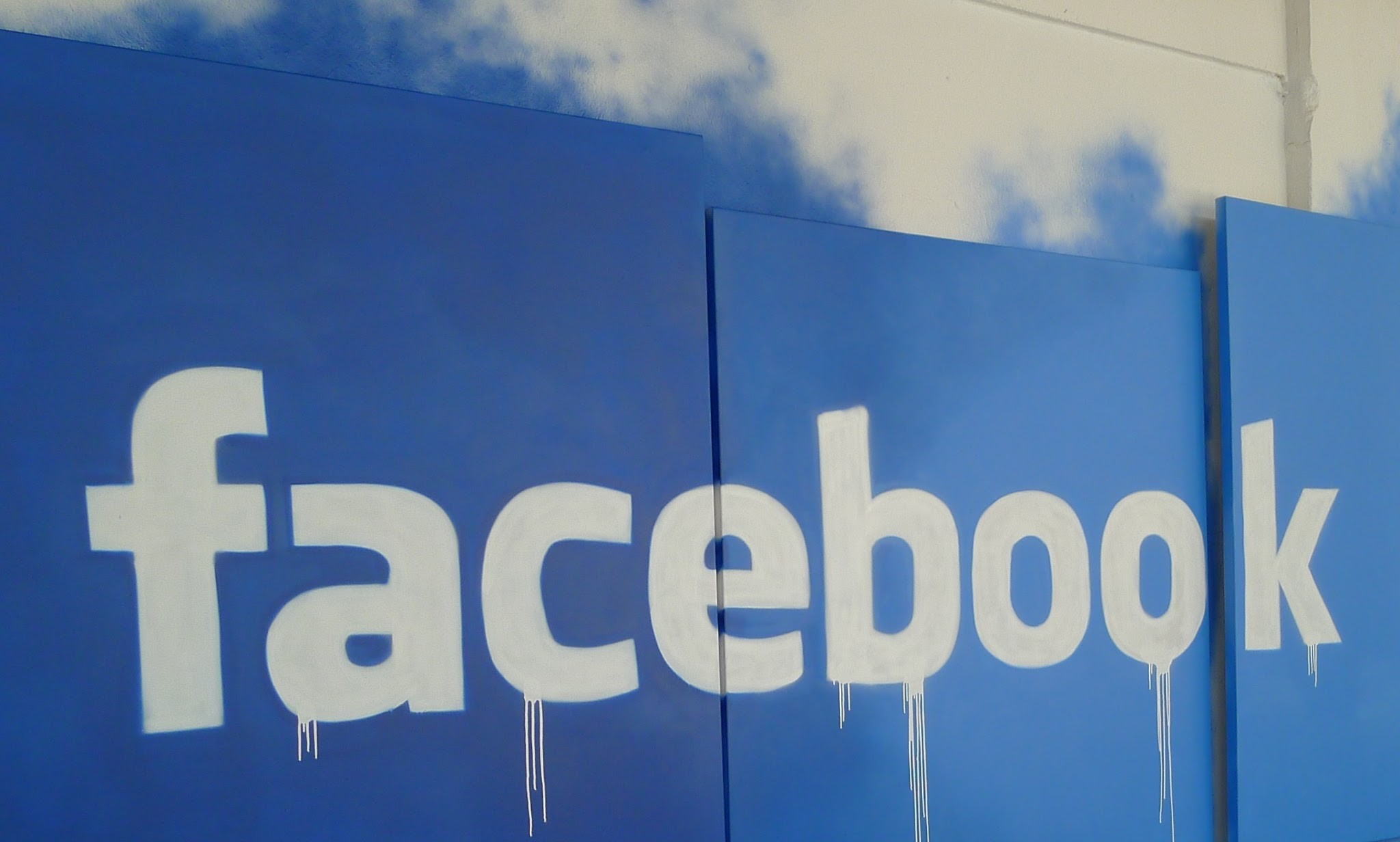
If you have ever launched an advertising campaign on Facebook, you probably know that at the first stage of creating the campaign, the site offers to choose its purpose. The purpose of advertising in the understanding of Facebook is the actions that people must take after viewing it. In total, the advertising system offers a choice of three types of goals.
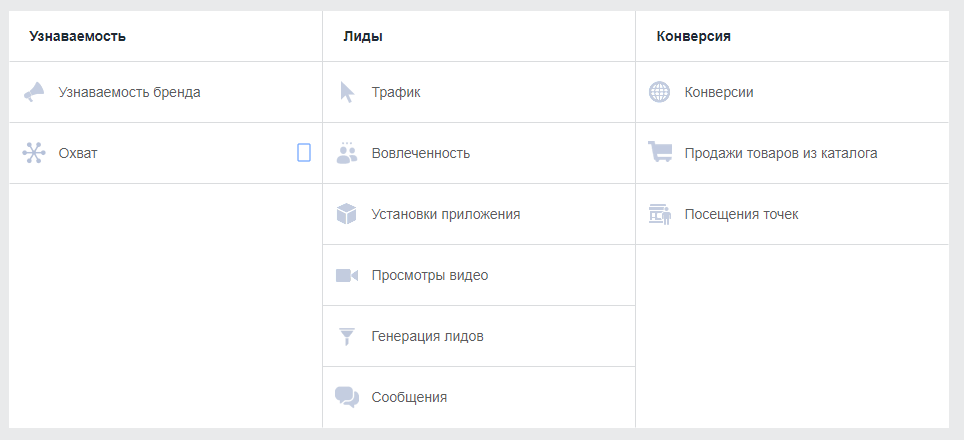
If you do not go into details, then the first group of goals is conditionally aimed at the most superficial interaction with the user and the implementation of media KPIs - impressions, reach and brand recognition. The second part of the goals encourages users to perform any actions within the social network itself: like, comment, fill out the lead form, click on the transition button, etc. The third group, the most ambitious, optimizes ad impressions so that those who see it who is most likely to perform the targeted action on the site.
At first glance, choosing a goal seems like a pretty obvious decision - tech Facebook has already done almost all the work for you. But the devil, as always, is in the details.
For one of our clients, a large auto holding, we often posted full-screen canvases in order to engage users in content and increase brand awareness. This system looks like a mini-landing inside the social. network, which opens when you click on the button of the advertising post in the user’s feed. Traditionally, we bought such placements with the purpose of Traffic in order to get the largest number of targeted transitions to the canvas.
However, the client also wanted maximum coverage of the target audience in this format, which we could not achieve with the help of the current optimization and within the allocated budget. It was decided to test the launch of campaigns with a canvas with optimization for coverage without changing the targeting and creative. The results of our work were analyzed and are shown in the table below.
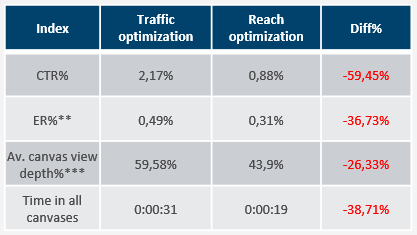
As you can see, we had nothing to brag about. Of course, the average coverage of our placements has increased several times compared to the initial one, however, the quality indicators by which we previously tracked the involvement of users in the content of the canvas have fallen dramatically. The click-through rate (CTR) of placements decreased by almost 2.5 times, engagement (the number of likes, reposts, comments on the promotion post) also fell by an average of a third.
Significant was the fact that the quality of viewing the canvas by users also decreased. Users attracted by ads with optimization in coverage watched the canvas on average by as much as 10 seconds less than the others, the average viewing depth decreased by almost a third.
Thus, in the pursuit of reach, we have lost the involved and active users. Having abandoned the idea of optimization for coverage, we continued to test new hypotheses.
Facebook is one of the most convenient tools for attracting leads, largely due to the fact that this mechanic is implemented in the social network itself. network. The user does not need to go to a third-party site and enter their data - a smart network will do almost everything for him. By clicking on the button in the advertising post, the user immediately gets to the application form, which automatically pulls data from his profile, it remains only to fill in the missing fields and submit the form.
Such simplicity entails certain quite obvious consequences - the number of non-targeted forms is large, and additional work on the processing of “empty” applications falls on the client’s call center.
Therefore, as soon as the site introduced a new function to "filter out" random applications, we immediately decided to try it out.

The meaning of the addition is that after filling out the application, an additional pop-up window pops up with confirmation of the action. According to Facebook, this measure will help weed out "low-quality" leads. Is it really?
During the RK (advertising campaign) for one of our customers, we regularly collect targeted applications for test drive cars. It was decided to try out the new product at the next placement. We chose “automotive” interests and a look-a-like audience based on the client’s CRM database as targeting settings.
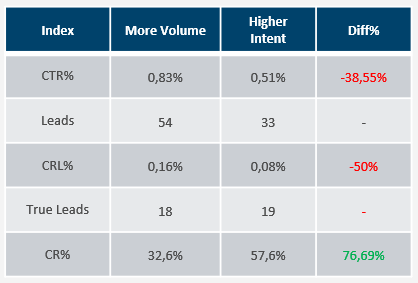
The test results were controversial: on the one hand, the use of an additional setting really increases the conversion from leads to targeted orders, on the other hand, the total number of leads received decreased, and the cost of lead with the same budget almost doubled, therefore, having won as a lead, we , of course, lost in quantity, and now we are faced with the task of scaling the results and further optimization.
Video advertising is the trend of the past few years. Our experience with videos on Facebook turned out to be quite entertaining, at least because we did not use it for traditionally media purposes, but to receive targeted clicks and registrations on the site.
The aim of the advertising campaign of one of our clients was to attract offline participants to an IT conference in Moscow, as well as to register for an online broadcast. To launch the advertising campaign, targeting was selected for relevant positions and interests in the field of software development, a placement strategy was worked out, and creatives were made with the image of speakers and main theses of speeches. In general, we observed a good picture of registrations, because Facebook, in principle, is loyal to this topic. However, I certainly wanted more, so as part of the test it was decided to use small samples from last year's conference as a teaser for click formats.

Honestly, we were even surprised by the result. Of course, we expected an increase in user engagement when using video, but the result exceeded all our expectations. Advertising campaigns had the same targeting, and calls to action and differed only in the format of the creative. Ads with video, according to our observations, received several times more clicks with a comparable number of impressions, and the cost of a click decreased by 19.71% compared to regular posts with a picture. By the way, the conversion from the video was also about a third more.
As a result, for this placement we turned off placements with a picture. In fairness, it should be noted that in other social networks, the video did not have such a significant difference in results as on Facebook.
Traditionally, advertisers are used to the fact that images for promotion in Instargam should be exclusively square. However, the social network has long allowed the use of vertical creatives, which occupy a large area of the user's screen and, therefore, attract more attention.
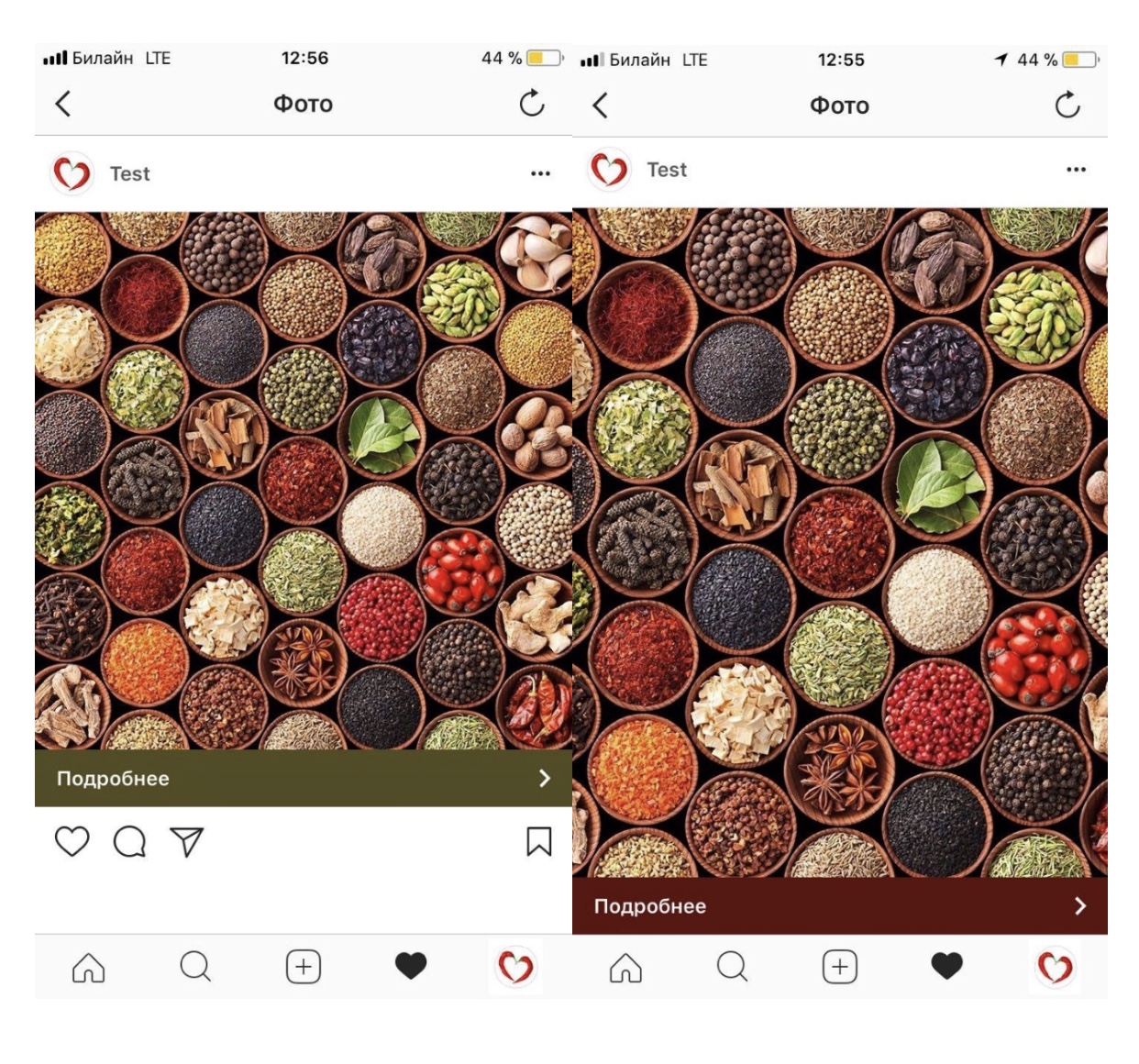
For one of our clients from the financial sector, the task was to increase the clickability of ads, reduce the cost of a click and lower the price of an application. As part of the testing, it was decided to use vertical creatives 1080 * 1350 as an alternative to creatives with static square images of 1080 * 1080.
For testing, we used traditional "financial" interests and look-a-like audiences. The interaction mechanics were also standard - an ad was shown to the user in the news feed, after clicking on which a transition was made to the site, where it was possible to leave an application for banking services.
In total, five pairs of creatives were tested with different USPs (Unique Selling Points), calls to action, colors, etc., the difference between each creative from a pair was only in the size of the image. In almost every pair, vertical creative worked better and had a lower click price than ads with square images. In total, during the testing, the cost of a click on vertical creatives was 18.64% lower than the CPC (cost per click) of square creatives, which, of course, affected the decrease in the cost of the application.

The difference of a few rubles in the price of a click seems insignificant, but when it comes to large numbers (more than 8 thousand clicks we received during testing), even the slightest decrease in the price of a click significantly affects the final price of the lead, allowing you to receive cheaper orders in the absence significant changes in the strategy of the Republic of Kazakhstan itself.
Marketing textbooks teach us that the USP of your product should be understandable to the target consumer and literally bounce off your teeth. This has become the reason that advertisers tend to present as much information as possible not in the text of the advertisement, but directly in the image itself, where the text is most visible.
Of course, this has its advantages and very significant, but not in the case of Facebook. The system critically refers to the amount of text in the image and automatically blocks ads on which its content is above 20%. And it’s okay to limit ourselves to stopping ads, but the tricky platform went further: ads that did not exceed the “critical threshold” in the text on the images, but still contain a lot of it, simply receive fewer targeted impressions, which leads to a decrease in the number and cost of traffic.

In our work, we have often encountered a situation where the amount of text in the image played a decisive role in the effectiveness of an advertising campaign.
Below, for example, is a screenshot of one of the ads in our Republic of Kazakhstan on attracting traffic to the site of a client who is developing software for B2B. Due to the specifics of the product, a fairly large amount of text had to be placed in the picture, which significantly affected the dynamics of the advertisement.
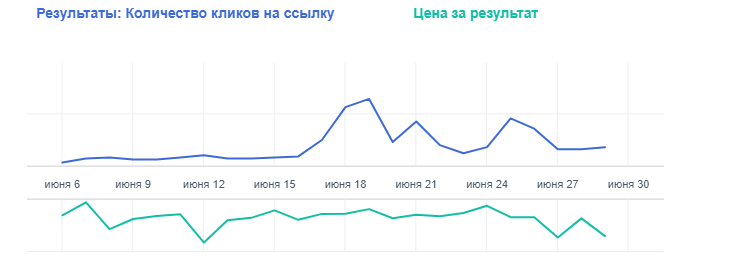
As you can see, until June 16 the updated images arrived in time for us, the ad received a consistently low amount of traffic per day, which, of course, did not bring us closer to the implementation of KPI. After updating the creative, we began to see more acceptable dynamics.
In truth, there are several tricks that completely legitimately allow you to bypass the clever text recognition algorithm on Facebook, but this material pulls on a separate article.
In this article, we have collected five non-obvious lessons that the Facebook advertising office presented to us and which we hope will be useful to you.

1. Properly choose the goal of optimization
If you have ever launched an advertising campaign on Facebook, you probably know that at the first stage of creating the campaign, the site offers to choose its purpose. The purpose of advertising in the understanding of Facebook is the actions that people must take after viewing it. In total, the advertising system offers a choice of three types of goals.

If you do not go into details, then the first group of goals is conditionally aimed at the most superficial interaction with the user and the implementation of media KPIs - impressions, reach and brand recognition. The second part of the goals encourages users to perform any actions within the social network itself: like, comment, fill out the lead form, click on the transition button, etc. The third group, the most ambitious, optimizes ad impressions so that those who see it who is most likely to perform the targeted action on the site.
At first glance, choosing a goal seems like a pretty obvious decision - tech Facebook has already done almost all the work for you. But the devil, as always, is in the details.
For one of our clients, a large auto holding, we often posted full-screen canvases in order to engage users in content and increase brand awareness. This system looks like a mini-landing inside the social. network, which opens when you click on the button of the advertising post in the user’s feed. Traditionally, we bought such placements with the purpose of Traffic in order to get the largest number of targeted transitions to the canvas.
However, the client also wanted maximum coverage of the target audience in this format, which we could not achieve with the help of the current optimization and within the allocated budget. It was decided to test the launch of campaigns with a canvas with optimization for coverage without changing the targeting and creative. The results of our work were analyzed and are shown in the table below.

As you can see, we had nothing to brag about. Of course, the average coverage of our placements has increased several times compared to the initial one, however, the quality indicators by which we previously tracked the involvement of users in the content of the canvas have fallen dramatically. The click-through rate (CTR) of placements decreased by almost 2.5 times, engagement (the number of likes, reposts, comments on the promotion post) also fell by an average of a third.
Significant was the fact that the quality of viewing the canvas by users also decreased. Users attracted by ads with optimization in coverage watched the canvas on average by as much as 10 seconds less than the others, the average viewing depth decreased by almost a third.
Thus, in the pursuit of reach, we have lost the involved and active users. Having abandoned the idea of optimization for coverage, we continued to test new hypotheses.
2. Pay attention to details
Facebook is one of the most convenient tools for attracting leads, largely due to the fact that this mechanic is implemented in the social network itself. network. The user does not need to go to a third-party site and enter their data - a smart network will do almost everything for him. By clicking on the button in the advertising post, the user immediately gets to the application form, which automatically pulls data from his profile, it remains only to fill in the missing fields and submit the form.
Such simplicity entails certain quite obvious consequences - the number of non-targeted forms is large, and additional work on the processing of “empty” applications falls on the client’s call center.
Therefore, as soon as the site introduced a new function to "filter out" random applications, we immediately decided to try it out.

The meaning of the addition is that after filling out the application, an additional pop-up window pops up with confirmation of the action. According to Facebook, this measure will help weed out "low-quality" leads. Is it really?
During the RK (advertising campaign) for one of our customers, we regularly collect targeted applications for test drive cars. It was decided to try out the new product at the next placement. We chose “automotive” interests and a look-a-like audience based on the client’s CRM database as targeting settings.

The test results were controversial: on the one hand, the use of an additional setting really increases the conversion from leads to targeted orders, on the other hand, the total number of leads received decreased, and the cost of lead with the same budget almost doubled, therefore, having won as a lead, we , of course, lost in quantity, and now we are faced with the task of scaling the results and further optimization.
3. Video drives more traffic
Video advertising is the trend of the past few years. Our experience with videos on Facebook turned out to be quite entertaining, at least because we did not use it for traditionally media purposes, but to receive targeted clicks and registrations on the site.
The aim of the advertising campaign of one of our clients was to attract offline participants to an IT conference in Moscow, as well as to register for an online broadcast. To launch the advertising campaign, targeting was selected for relevant positions and interests in the field of software development, a placement strategy was worked out, and creatives were made with the image of speakers and main theses of speeches. In general, we observed a good picture of registrations, because Facebook, in principle, is loyal to this topic. However, I certainly wanted more, so as part of the test it was decided to use small samples from last year's conference as a teaser for click formats.

Honestly, we were even surprised by the result. Of course, we expected an increase in user engagement when using video, but the result exceeded all our expectations. Advertising campaigns had the same targeting, and calls to action and differed only in the format of the creative. Ads with video, according to our observations, received several times more clicks with a comparable number of impressions, and the cost of a click decreased by 19.71% compared to regular posts with a picture. By the way, the conversion from the video was also about a third more.
As a result, for this placement we turned off placements with a picture. In fairness, it should be noted that in other social networks, the video did not have such a significant difference in results as on Facebook.
4. Size matters
Traditionally, advertisers are used to the fact that images for promotion in Instargam should be exclusively square. However, the social network has long allowed the use of vertical creatives, which occupy a large area of the user's screen and, therefore, attract more attention.

For one of our clients from the financial sector, the task was to increase the clickability of ads, reduce the cost of a click and lower the price of an application. As part of the testing, it was decided to use vertical creatives 1080 * 1350 as an alternative to creatives with static square images of 1080 * 1080.
For testing, we used traditional "financial" interests and look-a-like audiences. The interaction mechanics were also standard - an ad was shown to the user in the news feed, after clicking on which a transition was made to the site, where it was possible to leave an application for banking services.
In total, five pairs of creatives were tested with different USPs (Unique Selling Points), calls to action, colors, etc., the difference between each creative from a pair was only in the size of the image. In almost every pair, vertical creative worked better and had a lower click price than ads with square images. In total, during the testing, the cost of a click on vertical creatives was 18.64% lower than the CPC (cost per click) of square creatives, which, of course, affected the decrease in the cost of the application.

The difference of a few rubles in the price of a click seems insignificant, but when it comes to large numbers (more than 8 thousand clicks we received during testing), even the slightest decrease in the price of a click significantly affects the final price of the lead, allowing you to receive cheaper orders in the absence significant changes in the strategy of the Republic of Kazakhstan itself.
5. Do not rush to bring the UTP to the picture
Marketing textbooks teach us that the USP of your product should be understandable to the target consumer and literally bounce off your teeth. This has become the reason that advertisers tend to present as much information as possible not in the text of the advertisement, but directly in the image itself, where the text is most visible.
Of course, this has its advantages and very significant, but not in the case of Facebook. The system critically refers to the amount of text in the image and automatically blocks ads on which its content is above 20%. And it’s okay to limit ourselves to stopping ads, but the tricky platform went further: ads that did not exceed the “critical threshold” in the text on the images, but still contain a lot of it, simply receive fewer targeted impressions, which leads to a decrease in the number and cost of traffic.

In our work, we have often encountered a situation where the amount of text in the image played a decisive role in the effectiveness of an advertising campaign.
Below, for example, is a screenshot of one of the ads in our Republic of Kazakhstan on attracting traffic to the site of a client who is developing software for B2B. Due to the specifics of the product, a fairly large amount of text had to be placed in the picture, which significantly affected the dynamics of the advertisement.

As you can see, until June 16 the updated images arrived in time for us, the ad received a consistently low amount of traffic per day, which, of course, did not bring us closer to the implementation of KPI. After updating the creative, we began to see more acceptable dynamics.
In truth, there are several tricks that completely legitimately allow you to bypass the clever text recognition algorithm on Facebook, but this material pulls on a separate article.
